Share This
Album at a Glance
Tags
Related Posts
Velázquez and the Music of His Time / Cappella Mediterranea; Clematis; Namur Chamber Choir et al.
Posted by Elaine Fine on Jul 17, 2015 in Baroque | 1 comment
Velázquez and the Music of his Time is a compilation CD assembled to coincide with a 2015 exhibit at the Grand Palais in Paris of Diego Velázquez's (1599-1660) most important paintings. Aside from Velazquez’s 120 surviving works of art, his appointment to Philip IV of Spain in 1623, and his work with the Academia di San Luca in 1649, we know little about the painter’s life. The booklet that accompanies this recording, and is available online, gives a fine account of what is known about his life and work. He did make a painting in 1618 of three musicians (two guitarists and a fiddle player) entertaining themselves amid wine and cheese, but there is no reason to believe that Velázquez had any specific connection to music, particularly music of the formality and quality on in this collection. Still, many of the composers here were contemporary compatriots of Velázquez, and hearing the music of a particular time and place does enhance the experience of visual art.
Before 1492 the Spanish peninsula was full of Jewish and Arabian musical traditions. After Ferdinand and Isabella Catholicized Spain, those traditions were no longer considered part of the "legitimate" music of the 16th and 17th centuries, but they managed to survive. They also made their way into the music of other European countries, like England, Italy, and France. Many of the composers who found work in the Spanish courts (as well as courts in Italy) came from the Netherlands, Belgium, and France. This recording has a very exciting Italian-flavored traditional folia that demonstrates the alluring rhythmic spice of pre-Inquisition Spanish music by Matheo Romero (1575-1637) who was born Mathieu Rosmarin in Belgium, and studied in Madrid with the French-born Philippe Rogier. You can hear suggestions of that "spice" in the later pieces of sacred and secular music on this release.
The music in this collection comes from Ricercar recordings made between 2008 and 2011; the performers are, without exception, Baroque music specialists of the highest caliber. One of my favorite pieces here is an instrumental Canzon by Fray Bartolomé de Selma y Salaverde that features violinist Stéphanie de Failly and bassoonist Jérémie Papasergio. The traditional Chacona and Xácaras are played by La Real Cámara (courtesy of Glossa CD 929201) and feature violinists Emilia Moreno and Enrico Gatti. There is some solo keyboard music (one organ piece, and one harpsichord piece), and a good deal of vocal music. One of the loveliest vocal pieces here is Francisco Guerrero's Pan divino graçioso, which is a four-voice a cappella Villancico with a beautiful brass introduction.
Not everything here is Spanish. We get several selections from Gioseffo Zamponi's Italian opera Ulisse all'Isola di Circe, which seems to be included in this collection because it was performed in 1650 when Philip IV of Spain, Velázquez's patron, married Marianne of Austria. Matheo Romero incorporates a lot of Italian musical tendencies into his sacred music, and his Magnificat for double choir sounds downright Venetian.
All the performances are excellent, and demonstrate serious dedication to all the styles and idioms. The liner notes, which are available online, are written in English, French, Italian, and German.
With the participation of: La Real Camara, Ensemble La Romanesca, Jean Tubéry, La Fenice, Choeur de Chambre de Namur, Bernard Foccroulle, Alice Foccroulle, Jean-Marc AYMES, Syntagma Amici, Leonardo García Alarcón, Cappella Mediterranea, Ensemble Clematis.
On the occasion of the exhibition that the Grand Palais in Paris is devoting to Diego Velázquez, this disc proposes an evocation of the music that one could have heard at the court of Spain under the reigns of Philip III and Philip IV. Heirs to the tradition of the Flemish polyphonists, the sacred and secular repertoires increasingly assimilated the influences of the melodies and rhythms of folk music. As attest the painter’s stays in Italy, Spanish composers were also charmed by the novelties of the Italians’ Baroque language.
Source: Ricercar
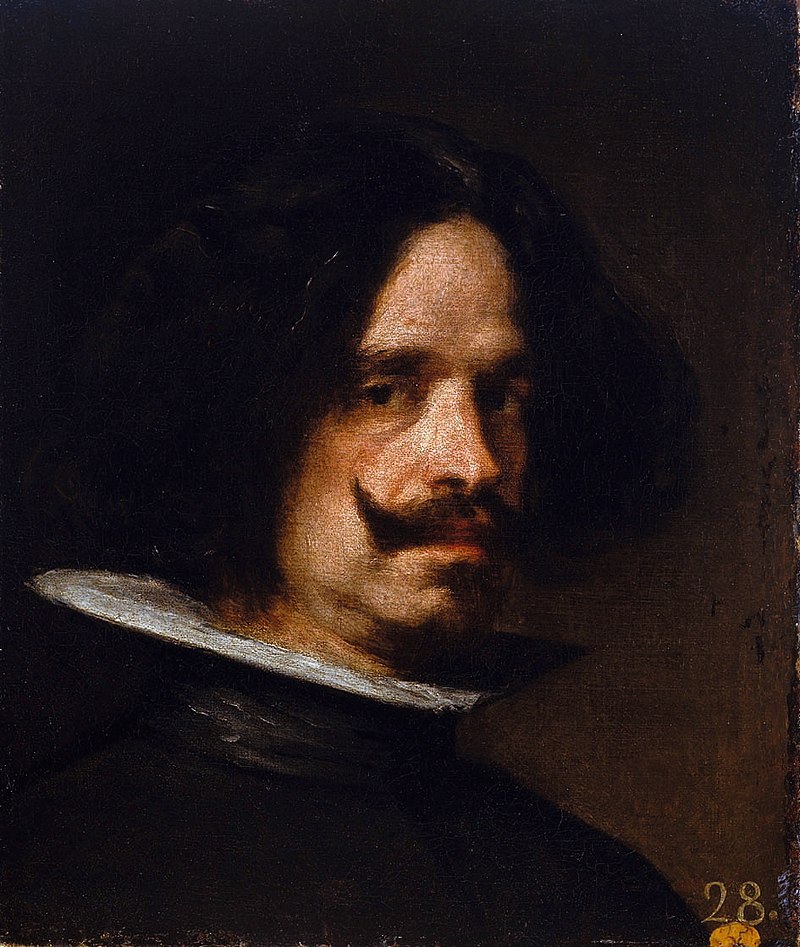 Diego Velázquez |
Diego Velázquez, painter Diego Rodríguez de Silva y Velázquez (1599 – 1660) was a Spanish painter who was the leading artist in the court of King Philip IV and one of the most important painters of the Spanish Golden Age. He was an individualistic artist of the contemporary Baroque period, important as a portrait artist. In addition to numerous renditions of scenes of historical and cultural significance, he painted scores of portraits of the Spanish royal family, other notable European figures, and commoners, culminating in the production of his masterpiece Las Meninas (1656). From the first quarter of the nineteenth century, Velázquez’s artwork was a model for the realist and impressionist painters, in particular Édouard Manet. Since that time famous modern artists, including Pablo Picasso, Salvador Dalí and Francis Bacon, have paid tribute to Velázquez by recreating several of his most famous works. Source: Wikipedia |
 Juan Hidalgo |
Juan Hidalgo, composer Juan Hidalgo de Polanco (1614 – 1685) was a Spanish composer and harpist. Hidalgo was born and died in Madrid. In either 1630 or 1631 he became a harpist at the Spanish royal chapel where he was responsible for the accompaniment of both sacred and secular music. Around 1645 he began to serve as leader of the court’s chamber musicians and chief composer of villancicos, chamber songs, and music for the theatre. Hidalgo became the most influential composer of his time in the Hispanic world. He dominated secular and theatrical music at the Spanish court until his death, enjoying broad popularity throughout his career. His place in Spanish theater history is equivalent to that of Henry Purcell in Britain and Lully in France. Hidalgo wrote music for at least nine allegorical religious plays that were performed in public for Corpus Christi. His life is the basis of a novel, The Harpist of Madrid, by the English author Gordon Thomas. Source: Wikipedia |
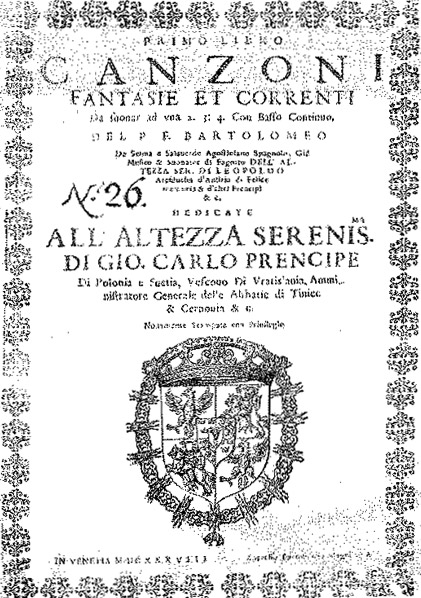 Bartolomé de Selma y Salaverde |
Bartolomé de Selma y Salaverde, composer Fray Bartolomé de Selma y Salaverde (Cuenca ca. 1595 – after 1638) was a Spanish Baroque composer and virtuoso player of the dulcian, a predecessor to the modern bassoon. He was an Augustinian friar who was employed at the archducal court at Innsbruck from 1628 to 1630, and was the son, or possibly grandson, of Bartolome de Selma (d. 1616), luthier to the Spanish royal chapel. His compositions include the Primo libro de canzoni, fantasie & correnti (Venice, 1638), and manuscript vocal works. Source: Wikipedia |
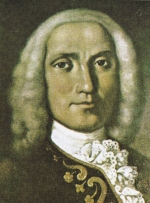 Joan Cererols |
Joan Cererols, composer Joan Cererols (1618 – 1680) was a Catalan musician and Benedictine monk. His musical production includes a Requiem (or Missa pro defunctis) composed in the mid-seventeenth century during the great plague which ravaged Barcelona, and a Missa de Batalla (Battle Mass) which celebrates the conquest of the Kingdom of Naples. Cererols was born in Martorell. He entered the choir school Escolania de Montserrat around 1626. Cererols took his first steps in music under the direction of Father Joan March, a famous organist. After ten years in the escolania, Joan was admitted as a novice at the Monastery of Montserrat on 6 September 1636, at age eighteen. The polychoral dialogue texture - featuring a slight gap between the vocal entries within each choir which lightens his style and contrasts with that of the composers of the earlier generation - is supposed to be an influence of March. In 1648, Cererols received March’s permission to visit Madrid where he could meet the new generation of musicians. After his return, he was confirmed as a member of the monastic community. After the death of March in 1658, Joan Cererols became choirmaster in his home monastery, a position he held until his death there in 1680 at age 61. Source: Wikipedia |
 Leonardo García Alarcón |
Leonardo García Alarcón, conductor Leonardo García Alarcón (born 1976 in La Plata) is an Argentinian conductor specializing in baroque music. He studied harpsichord and organ and was assistant to Gabriel Garrido for several years, before founding the ensemble Cappella Mediterranea, with whom he has performed at many festivals, particularly the Festival d’Ambronay. Following a performance of Il diluvio universale by Michelangelo Falvetti (1642–1692), he received the médaille de citoyen d’honneur d’Ambronay. He teaches at the Geneva Conservatoire and carries out research into 17th century basso continuo playing. He shares direction of the Ensemble Clematis with violinist Stéphanie de Failly. Since 2010 he is artistic director of the Chœur de chambre de Namur, and La Nouvelle Ménestrandie. Source: Wikipedia |
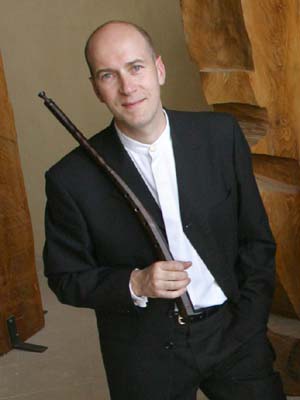 Jean Tubéry |
Jean Tubéry, conductor Jean Tubéry (born in Toulouse) is a French player of the cornett (Italian cornetto) and conductor. He is noted for being, along with his own teacher Bruce Dickey and his colleague Jean-Pierre Canihac, one of the main cornett players to resurrect the baroque instrument, cornet à bouquin, as part of the historically informed performance movement and early music revival. Tubéry originally studied recorder at his home town Toulouse and then at the Amsterdam Conservatory, but decided to switch to cornet and undertook studies with Bruce Dickey at the Schola Cantorum Basiliensis. During the 1980s and 1990s he performed with almost all of the well known early music ensembles of the period including Les Arts Florissants under William Christie, La Petite Bande under Sigiswald Kuijken, the Clemencic Consort of René Clemencic, Hesperion XXI underJordi Savall, as well as the Ensemble Clément Janequin of Dominique Visse, Collegium Vocale de Gand for Philippe Herreweghe, Concerto Vocale of René Jacobs, the Huelgas Ensemble of Paul Van Nevel, Cantus Cölln and Konrad Junghänel, The Ensemble Elyma of Gabriel Garrido and so on. Source: Wikipedia |
|
Bernard Foccroulle |
Bernard Foccroulle, organ Bernard Foccroulle (born in Liège, 23 November 1953) is a Belgian organist, composer, conductor and opera director. He studied at the Conservatoire de Liège and initially became known as a member of the Ricercar Consort. He was president of the Jeunesses musicales, then in 1992 named director of the Théâtre royal de la Monnaie. Source: Wikipedia |
 Namur Chamber Choir |
Chœur de Chambre de Namur, ensemble The Choeur de Chambre de Namur (founded 1987) is a choir based in Namur, which is sponsored by the Communauté française de Belgique. Since 2010 the artistic director is Leonardo García Alarcón and conductor of the instrumental ensemble is Guy Van Waas. The choir has worked with many visiting conductors: Eric Ericson, Marc Minkowski, Pierre Cao, Jean-Claude Malgoire, Simon Halsey, Sigiswald Kuijken, Jean Tubéry, Roy Goodman, Michael Schneider (conductor), Philippe Herreweghe, Peter Phillips (conductor), Jordi Savall, Christophe Rousset, and Eduardo López Banzo. The choir has a baroque instrumental ensemble, Les Agrémens which works exclusively in session under the direction of invited conductors or the current chief conductor Guy Van Waas. Source: Wikipedia |
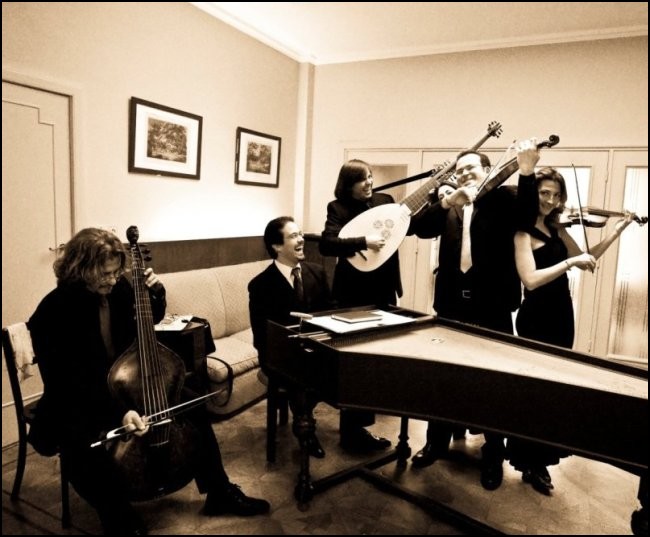 Ensemble Clematis |
Clematis, ensemble The clematis is a delightfully scented flower that represents the principles of idealism and of creativity. Such a name for an ensemble specialising in baroque music is more than justified, for it is creative in that this repertoire can only live if it receives an interpretation based on inspiration and renewal; it is idealistic in that such creative inspiration must of necessity be based on a great respect for the work as it appears in its original sources. The violinist Stéphanie de Failly founded Clematis in 2001 with the intention of concentrating on the lesser-known repertoire of the 17th century. The ensemble performs extensively from the Italian repertoire of the period as well as French and German works, although with a particular interest in the forgotten works of such composers from the Low Countries of the time as Nicolaus à Kempis, Carolus Hacquart and Giuseppe Zamponi. Clematis also made a performing version and gave the first performance in modern times of Zamponi’s opera Ulisse nell isola di Circe; the opera had first been given in Brussels in 1650. Source: Outhere Music |
![]() About Elaine Fine
About Elaine Fine
Twitter •
| Thinking about purchasing this album?
Follow this link for more album details or to make the purchase. Buy it now |
“Not just recommended. Guaranteed.”
We stand behind every album featured on Expedition Audio. Our objective is to take the monetary risk out of music exploration. If you order this album from HBDirect.com and do not like it you can return it for a refund.
Francisco Guerrero (1528-99): Maria Magdalene





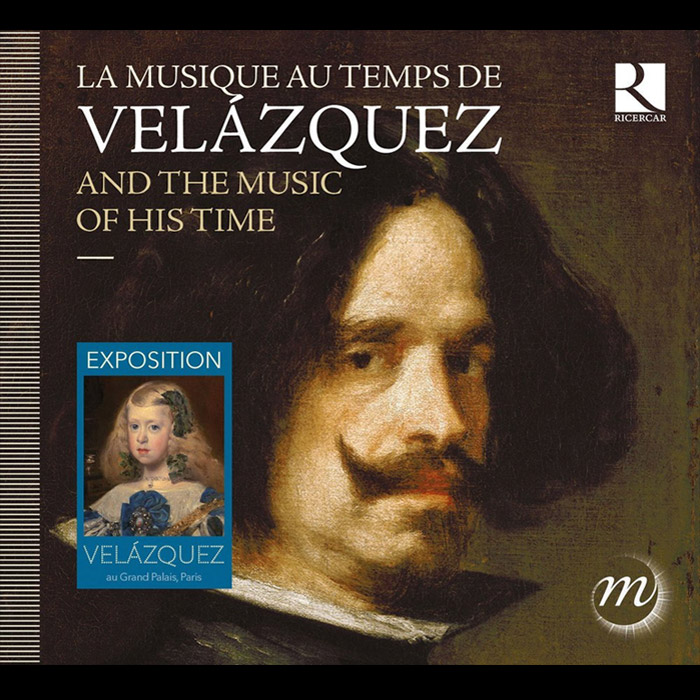
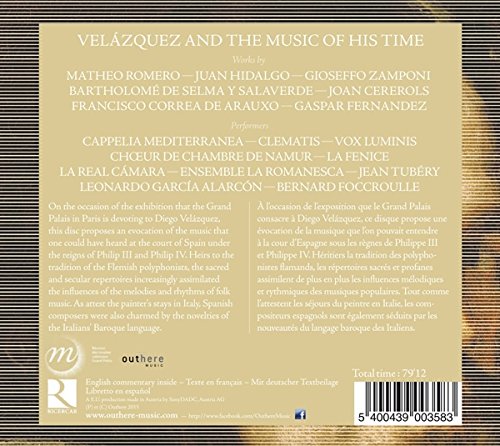

Equisite